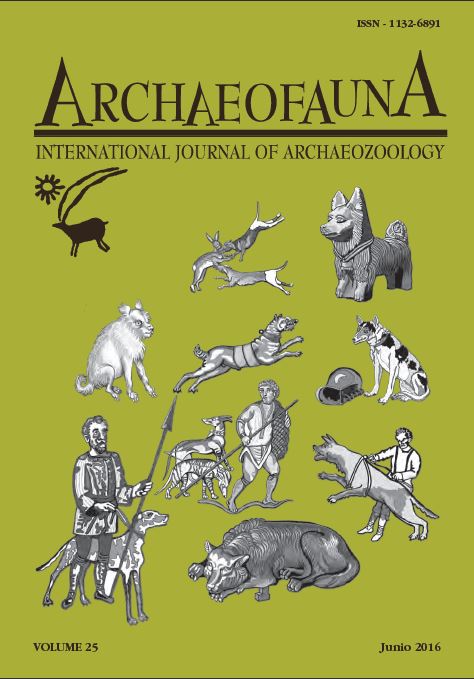The dogs of Roman Vindolanda, Part I: Morphometric techniques useful in differentiating domestic and wild canids
Palavras-chave:
Canis familiaris, craniometría, análisis de Grossi Mazzorin-Tagliacozzo, perro doméstico, análisis multivariante, análisis de componentes principales, romano-británico, VindolandaResumo
El fuerte-poblado romano de Vindolanda en el norte de Inglaterra fue ocupado desde el 50 al 415 A.D. y ha proporcionado una importante colección de restos bien conservados de perro, Canis familiaris. En este trabajo, utilizando una combinación inédita de técnicas bioestadísticas para determinar los parámetros que mejor diferencian cánidos, verificamos la hipótesis referida a una cría selectiva de perros por parte de los habitantes de Vindolanda. Al tiempo, discriminamos los restos de perros de los de lobo y zorro común, dos especies de cánidos de talla semejante al perro distribuidos por toda Eurasia. Los perros de Vindolanda se encuentran morfológicamente menos diferenciados que sus parientes actuales pero mucho más que sus parientes británicos del Neolítico y Edad del Hierro. Su diferenciación morfológica es igual de amplia que la de los perros procedentes de otros yacimientos romano-británicos y solo ligeramente inferior a la documentada para todos los perros de época romana procedentes de Europa y el Norte de África. Por ello, parece que los perros de Vindolanda sufrieron una selección direccional superior a la esperada cuando se asume sólo la existencia de presiones ambientales lo cual sugiere que fue una cría selectiva, y no tanto una panmixis aleatoria de individuos, lo que mantuvo tal grado de diversificación. Los perros de Vindolanda constituyen un grupo ideal para realizar análisis de ADN toda vez que parece incorporan individuos que manifiestan una diversificación incipiente a partir de antecesores con aspecto de dingo.

